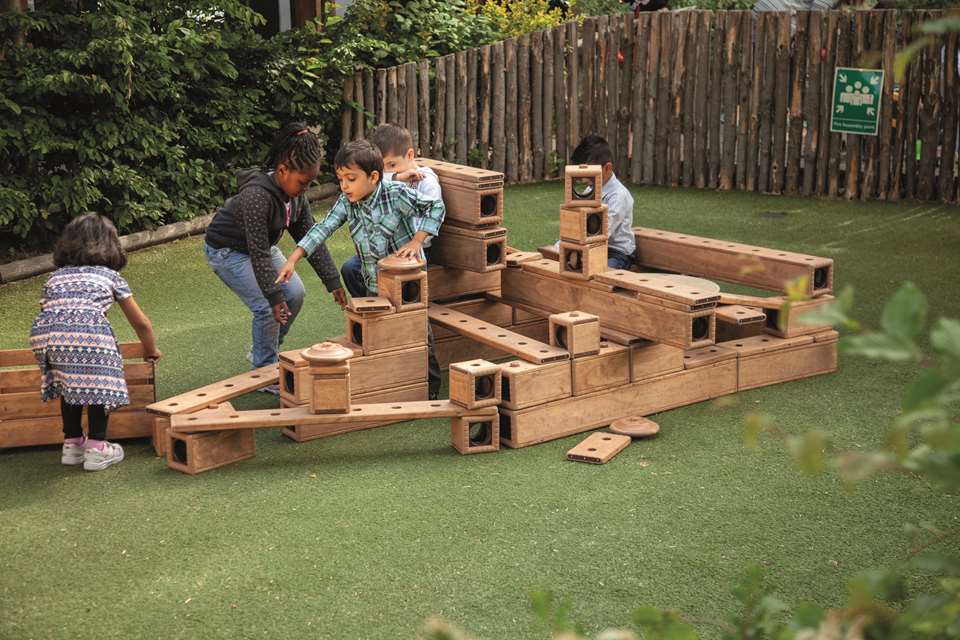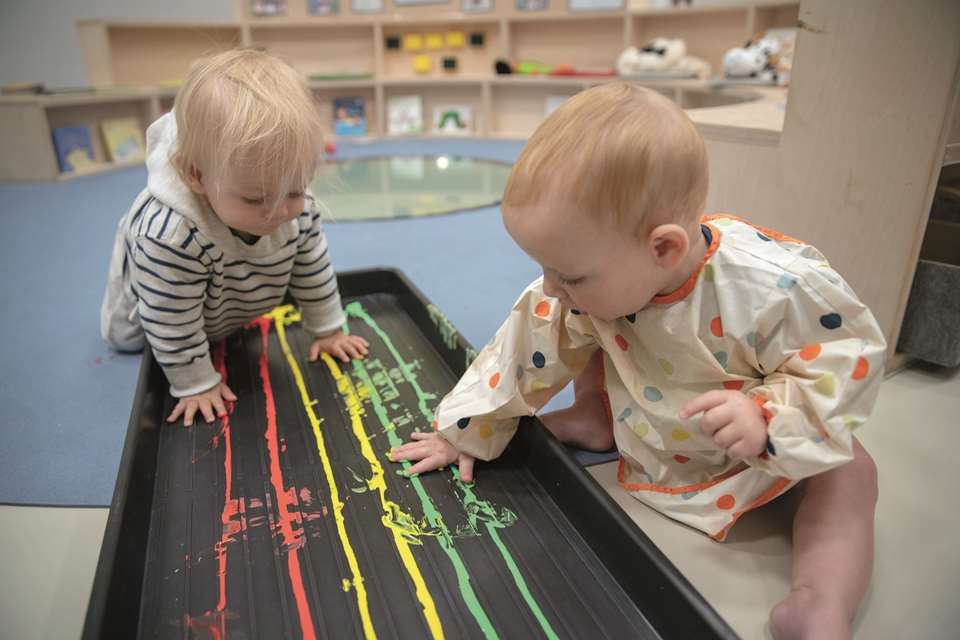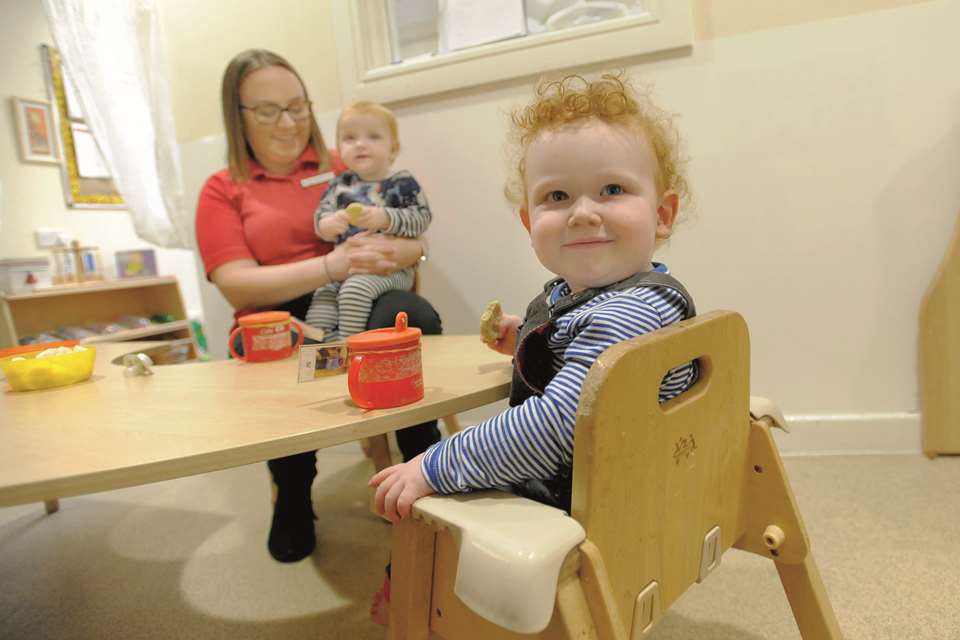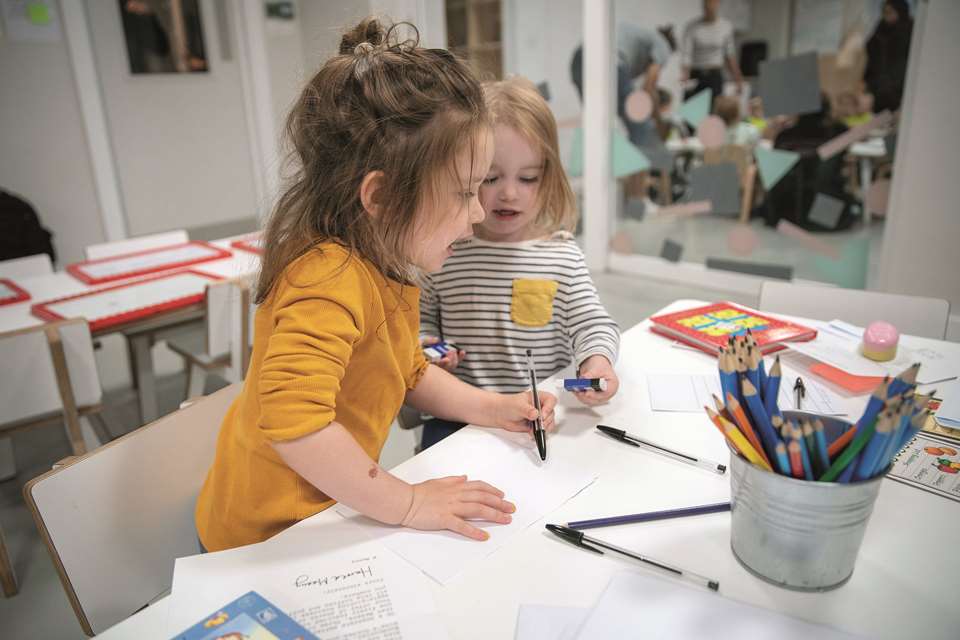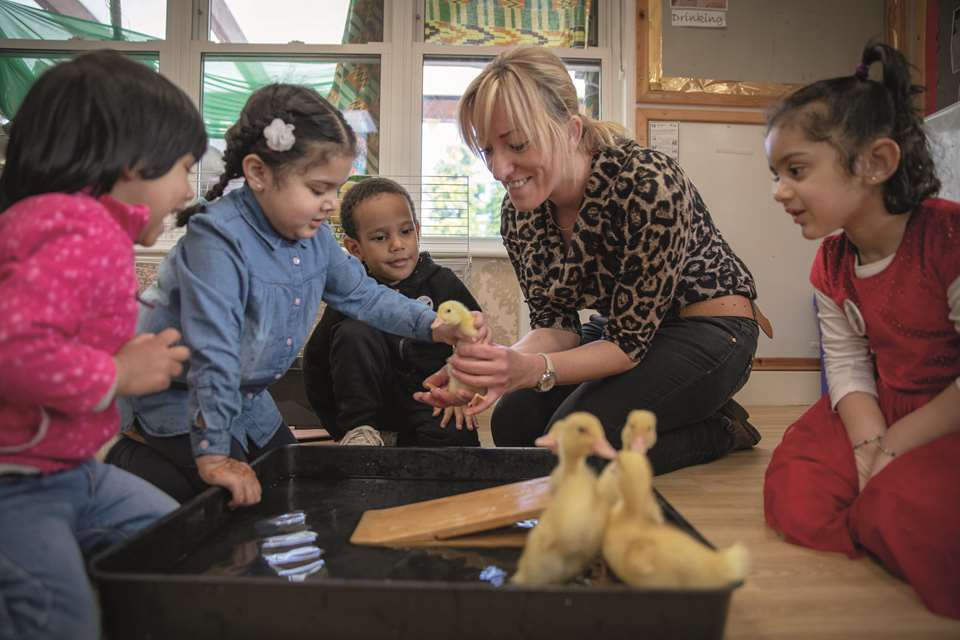Building Your Curriculum: In the Community - Just do it!
Anne O’Connor
Tuesday, June 30, 2020
Anne O’Connor explains why visiting local spaces is important – and how to navigate doing so in the wake of lockdown

In these difficult times, it is hard to imagine children out and about freely exploring their neighbourhood, interacting happily with people of all ages and making an impact on their local community. But, living as I do close to our local park, I was privileged every day during the lockdown period to see passing by my window children of all ages – bobbing alongside their parents, scooting on their scooters, being carried on shoulders and pushed in prams and buggies. All on their way for their daily exercise and, no doubt, a break for their parents from being indoors all day with them.
But there is more to children being out in their neighbourhood than just exercise and fresh air.
BEING VISIBLE AND ACTIVE
From 2014-2017, the Young People, Public Spaces and Democracy (or BRIC) project, led by Professor Tim Waller of Anglia Ruskin University, ran in England, Sweden and Italy with the aim of making children visible and active members of their local communities and increasing their democratic engagement in public spaces.
Participating nurseries and childminders focused on exploring three types of public space:
- the street, footpath or equivalent
- an indoor space (other than nursery, such as a library)
- a green outdoor space (such as the park).
The visits were regular rather than one-off to encourage sustained interactions with people and places in the community and to emphasise children as ‘democratic citizens’ in their own neighbourhoods. This is defined as:
- Being taken seriously.
- Having the right to see the world from different perspectives.
- Being able to affect – and being affected by – what happens in these public spaces.
Participants were encouraged to engage in three ways:
- in a planned event
- in a spontaneous interaction
- ‘leaving a trace’ – that is, anything from a simple chalk mark on a pavement to an exhibition of children’s pictures in a library (see box).
Although the UK settings had to deal with various challenges, the project produced some very encouraging case studies and examples of significant shifts in mindset among practitioners and members of the community, as well as a positive impact on the children (see More information).
RECOGNISING AFFORDANCES
Another important voice in our understanding of children’s interactions with their local environment is consultant Tim Gill and, particularly in this context, with regard to his writing on what he refers to as ‘affordance’ in urban environments.
An affordance is ‘something in the environment that makes an offer to a person, or that reveals a possible function’ (Gill 2012). So, a low wall might be something to climb to a child, a handy seat to an adult, and an easy practice ramp for a skateboarder. Affordances are often specific to certain groups.
In ‘5 ways to explore…your neighbourhood’, Julie Mountain describes how, after a benefit-risk assessment, street furniture can make an excellent workout circuit for children. Though the current pandemic may present new challenges, including increased hygiene requirements when touching things outside, thinking about ‘affordance’ reminds us yet again of the value to children of a simple ‘walk around the block’.
NOTICING THE LITTLE THINGS
Early in the lockdown, early years specialist Ruth Swailes blogged about how the limitations of lockdown were freeing her up to ‘notice’ small things and that this is very similar to a child’s perspective. She quotes Dr Helen J Williams, who suggests that ‘What do you notice?’ is a much more valuable open-ended question to use with children than the closed questions often used to question their knowledge and understanding.
If you have ever walked down the street with a small child, you will know the minute detail in which they are likely to notice the smallest of things, many of which may seem inconsequential to us. It is this propensity to notice what is under their noses (and feet and within reaching distance!) that means children are expert observers of their environment – an expertise that we can tend to overlook in our rush to give them ‘interesting’ and ‘fun’ experiences.
It is likely that many of the children bobbing up and down past my window during lockdown were regularly drawing attention to all the little things that I have only just begun to notice in my neighbourhood since the lockdown narrowed all our horizons.
It is likely that excursions and outings for large groups of children will continue to be limited for some time to come, but once things begin to improve and people are starting to feel more secure, this needn’t stop families and settings from getting out and about on little expeditions to explore their local area, taking their time to wander round the block with no real destination other than being ‘out and about’.
The DfE has now made clear that early years providers ‘should maximise use of private outdoor space, while keeping small groups of children and staff away from other groups’ and that ‘Childminders and early years providers may take small groups of children to outdoor public spaces, for example parks, provided…they can stay 2m away from other people at all times.’
FIRST-HAND EXPERIENCES
As so much of the ‘learning’ experience for children during lockdown has been driven by online resources, we must not forget just how important first-hand experiences are to children in terms of their brain development and enthusiasm for learning. Listening to birdsong, counting all the red cars or posting letters in the post box, all on a screen in an app, cannot compete with the positive impact on the developing brain of sharing those experiences for real, with others, outside in the sunshine or even the rain!
The Characteristics of Effective Learning (CoEL) are also exemplified and well-supported by the kinds of experiences children have when they are out and about in the community. The opportunities for exploring, active learning and thinking (the CoEL) are intensified by being out exploring in a small group where their individual voice can be heard and the ‘real world’ is there to trigger ideas and connections.
PROJECTS
As well as the BRIC project, there have been other localised projects that have deliberately focused on children’s immediate locality and neighbourhood.
Connecting kids
Lancaster University, Eden North and Lancaster and Morecambe community partners
Early years representatives of the Eden North Learning Project have been absorbed by this question of ‘What do you notice?’ while working on ideas for Activity Boxes for local children and families to use at home.
The boxes are part of the Morecambe Bay area project Connecting Kids, which initially supported refugee families with their children’s learning during lockdown but now has broadened to a wider remit and brought together a wide collective of community partners.
Now its aim is to help all children maintain an emotional connection with their schools and each other, through a focus on simple, open-ended ideas that families can do with children at home, in their gardens, backyards or streets and which encourage children to engage first-hand with the natural world on their doorstep.
Early year representatives have included suggestions for movement and drama play that support children’s physical and emotional well-being, as well as guidance for using open-ended questions, including ‘What do you notice?’. These not only support children’s communication and language development, but also encourage adults to connect with the child’s perspective.
The beauty of these resources is they will continue to be valuable when children return to nursery and school, as they remind families of the value of looking at the world from the child’s perspective and that families don’t have to look very far for inspiration.
Exploring the Wider World Project
Stoke-on-Trent Opportunity Area and Early Education
Funded by the Stoke-on-Trent Opportunity Area and delivered by Early Education, Exploring the Wider World Project helped PVI settings widen children’s experiences by making the most of what is on their doorstep in terms of heritage, culture and community. The training and support increased not only practitioners’ understanding of the Knowledge and Understanding of the World elements of the EYFS but also their enthusiasm and confidence for taking children outside the setting and into their communities (see Case studies).
Greenfields Nursery School and Children’s Centre
Greenfields Nursery School and Children’s Centre in Southall, west London, has a long history of viewing ‘the natural environment as a platform on which to build children’s health and social welfare, as well as a sense of democratic and cultural cohesion which can be difficult to find in other situations’ (Potter, Nursery World, 2017).
By involving the local community in the life of the school and working with an artist-in-residence to ensure that the children and their creative processes are also very visible within the community, the setting has enabled a mutual ‘spirit of creative exchange’ in which everyone is learning from each other (see More information).
NOTICING…
nature and the built environment
All of the projects above have drawn attention to the significance for children of both the built environment (for example, buildings, canals, roads and street furniture) and the natural environment (sky and weather, trees and plants, birds and other wildlife, etc.) that children see and experience around them.
Very often, and particularly in urban environments, it is the interplay between the two that fascinates children. The ant walking along a brick wall; the dandelion growing between the cracks in the pavement; the bird singing on the lamppost – these are the things that can captivate children, while we adults may not even notice them as we walk along the streets.
Similarly, do we really notice the shape of bricks, the colours of front doors and the style of lampposts that can tell us a lot about the ‘story’ of the area where we live or work? Sadly, children can also lose their fascination for these things, particularly if only viewed from the window of a car or if they are left with little time to ‘stand and stare’. While scientific, geographical and historical knowledge and information involved in ‘understanding the world’ may be important, it is the questioning, the curiosity and the fascination for these simple things that we need to encourage and foster in our future scientists, geographers and historians.

people – and being noticed
As many of the participants in these projects also highlighted, people are another of the key things noticed by children when they are out in their neighbourhood – and members of the community, by and large, are pleased to see them and interested in what they are doing.
As Professor Tim Waller of the BRIC report commented, ‘Our argument is that children live in a community and participate in it, so they need to be seen in those spaces, interact in them, and learn from an early age that these spaces are for them as well’ (Jones Russell 2018).
This isn’t without its challenges, however, and where settings have been most successful in breaking down barriers and enhancing relationships, it is often a result of spontaneous ‘seizing of the moment’ during interactions, as well as careful thought and planned events.
It is worth remembering that the outdoors may be the way forward to restart the many ‘intergenerational’ projects, between nursing homes and early years settings, which have had to be suspended due to lockdown. Given the length of time that many elderly people as well as children have been distanced from their communities, it will be important in the future that the presence of both groups is highlighted and encouraged to grow again.
CHALLENGES
Handwashing
The current pandemic may seem to have intensified the challenges of taking children outside the setting, and there is no denying that social distancing and hygiene guidance, particularly with regard to what children touch, will probably continue for some time. But in the way that we all became more vigilant some years ago about handwashing for children coming into contact with animals in petting zoos, etc., a heightened sense of hand hygiene is something we are now learning to incorporate into our daily lives.
Heightened anxiety
Another outcome of the pandemic that we must pay careful attention to is the likelihood that some (if not all) children may have a heightened anxiety in unfamiliar places and around other people. This reinforces the importance of initially using just the immediate neighbourhood for little expeditions, as well as sensitive responses to children’s anxieties and gradually rebuilding their confidence.
We, as practitioners, can help by modelling polite responses on behalf of the children, reinforcing protective behaviours around strangers and reminding children that though we might smile or say hello, it is the child’s choice whether to engage in conversation – and neither will every adult want to be spoken to.
Members of the public may be anxious around children too, as will practitioners and parents as we all become habituated to social distancing and have a heightened sense of anxiety about contact.
JUST DO IT!
Early years providers will no doubt play a key role in helping our communities regain their confidence, so the best way to address these anxieties is through a combination of focused training specific to the local area and increased opportunities to ‘just do it’, as emphasised by all of the participants on the aforementioned projects.
Getting out and about, even if only to the end of the road and back again, sustained on a very regular basis, with small groups of children and no more specific an aim than just ‘let’s see what we notice’, seems to be the best way of building confidence and expertise in promoting children’s understanding of the world.
To think global, it is best to start local and just get out there. Be alert for the risks and challenges, but let’s also make sure we stay alert to the awe and wonder offered to all of us every day in the places where we live and work.
LEAVING A TRACE
Traces can reinforce children’s connection with a space and the places they visit and inhabit. Traces can be:
Tiny and simple – for example, a pebble left in a special place or any other ‘found object’ placed specifically somewhere. Checking to see if it is still there next time can be part of the fun, and stories can be made up about where it might have gone next.
Semi-permanent – for example, little structures made by the children, such as little nests made in the grass or drawings, sculptures or little houses made from natural bits and pieces and small parts. These are essentially transient art in that they won’t last for ever, and care should be taken not to leave anything that would litter or damage the area.
Items left specifically to be found and shared – for example, pebble art or chalk marks or drawings that identify where the children have been. The rain will generally take care of any long-lasting effects of the chalk, but make sure children know to respect private property, and where it is OK to make marks in public spaces and where it might be construed as graffiti.
More permanent – for example, a display of children’s artwork in a community or public space, such as a library or shop window. Children can take their families to see it, and it will also be seen by anyone living locally.
Items that children choose to bring back with them from an expedition – this could be a real item, perhaps found or bought from a shop, for example, but could just as easily be a memory or an emotional connection to be talked about later that day or perhaps triggered again when out another time.
CASE STUDIES: Exploring the Wider World, Stoke-on-Trent
Kingsland Kindergarten
The setting manager was concerned that the team weren’t making the most of outside opportunities, mainly due to lack of confidence and concern about logistics. After getting reassurance from the project co-ordinator about factors such as ratios, she felt ready to inspire the staff to view ‘going out’ differently.
Now the initial requirement for staff to arrange one small outing a week has generally increased to two or three trips, due to the children’s interests and staff enthusiasm.
The kindergarten has been encouraged by starting with small groups, short trips and exploring nearby streets. Staff quickly noticed how happy the children were about going out on their little trips, and now make the most of their outings for drawing on children’s interests and for building conversational skills.
The ‘Going Out’ box on the planning is now so much more than just a ‘box-ticking’ exercise, as the staff are enthusiastic about linking outings with children’s interests and motivations and now view going out as an integral activity in their curriculum.
Fieldhouse Nursery
Thanks to the Exploring the Wider World project, the quantity and range of outings has increased at this setting, and there has also been a profound shift in the way the team view and plan for opportunities to develop children’s Understanding of the World.
Staff now acknowledge that the experience starts ‘the minute the children leave the nursery gates’ and that everything along the way is just as important as the destination. This is an approach they have shared with parents too, involving them as much as possible with the outings and encouraging them to ‘liberate’ themselves from their phones when they are out together!
Parents are encouraged to look at what’s around them when they are with their children and make the most of opportunities for conversation when they are out and about. Planning for outings now goes beyond the required risk assessments, with staff now focusing much more deeply on the potential of the whole journey and reflecting on the deeper learning and impact on everyone involved. They intend to develop this further, particularly with regard to involving parents as partners in these activities.
Particularly useful was a clay workshop with Early Education associate Anni McTavish, which helped the team see the potential of their unique locality in promoting children’s learning and making a connection with families. They hope to set up a clay workshop with families, drawing on the experience of many of the parents and grandparents who were connected with the potteries. The workshop will be called ‘Clayheads’ – reclaiming the familiar local term for people who worked in the ‘potworks’. They hope one day to have their own potter’s wheel in the setting.
The project books and Big Map resources also inspired the nursery team to connect with local streets and go looking for things such as post boxes. As part of staff training, the setting organised a torchlight treasure hunt through local streets, where two teams of practitioners competed against each other to find local points and do specific tasks (for example, tree rubbing and taking photos).
The team’s advice to other settings unsure about going out is, ‘Once your risk assessments are complete and your planning is in place, then “just do it”. If you hold yourself back, then you will be holding the children back.’
For the final project report, more information on related training and free resources from the project, visit: www.early-education.org.uk/exploring-the-wider-world
MORE INFORMATION
- BRIC project: see ‘All about…children in the community’ by Meredith Jones Russell and ‘Going public’ at www.nurseryworld.co.uk
- Tim Gill on affordances is at: https://rethinkingchildhood.com/2012/01/30/affordance
- Julie Mountain: ‘5 ways to explore…your neighbourhood’, www.nurseryworld.co.uk
- Ruth Swailes: www.assure.education/blog
- Connecting Kids: www.lancaster.ac.uk/news/massive-fundraising-effort-brings-in-almost-120k-for-connecting-kids-initiative
- Greenfields Nursery School and Children’s Centre: articles by Rosie Potter at www.nurseryworld.co.uk




